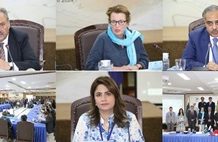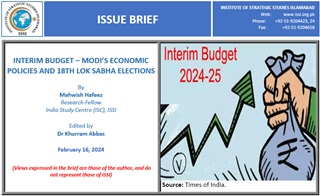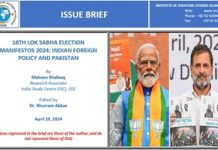When Prime Minister Modi inaugurated Ram Mandir on 22 January 2024,[1]it was said that he had formally started his electoral campaign for the next Lok Sabha elections. Just days after the Ram Mandir inauguration, Mr. Modi’s economic policies and how they have ‘positively’ impacted ordinary Indians over the last ten years was laid out before the public with a view to garnering popular support for his third consecutive term in office.
On 1 February 2024, India’s Finance Minister Nirmala Sitharaman made a strong case to convince the public to elect Prime Minister Modi for the third straight term. Presenting Interim Budget[2], Ms. Sitaraman highlighted in detail the welfare schemes introduced by the BJP government in the last ten years. She highlighted that Direct Benefit Transfers of Rs. 34 lakh crore through PM Jan Dhan Yojana (National Mission for Financial Inclusion) accounts led to savings of ₹2.7 lakh crore. The government provided credit assistance to 78 lakh street vendors under the PM-SVANidhi scheme (Street Vendor’s Self Reliance Fund), whereas 30 crore Mudra Yojana (self-employment/employment creation through financial inclusion) loans were disbursed among women entrepreneurs. Around 1.4 crore youth were trained under the Skill India Mission. The Interim Budget also promised to subsidise the construction of 30 million affordable houses in rural areas. It also announced several schemes to turn Net Zero by 2070 including providing funds to harness offshore wind energy generation for an initial capacity of 1 Giga Watt, procuring biomass aggregation machinery, and expanding the e-vehicle sector by encouraging more manufacturing and charging infrastructure. The Interim Budget also highlighted increase to ₹11.11 lakh crore for 2024-25 on spends on capital expenditure.[3]















